Impact Conversations with Aavishkaar Group | Ep. 7
16 February, 2024
Underserved Customers (52% Women) supported through our Investments and Engagements
Total Capital Disbursed
Assets Under Management
SDGs that Aavishkaar Group is contributing to
The past two decades at Aavishkaar Group have been characterized by grit, innovation, and learning. Our entrepreneurs, investors, team, and collaborators have shown an unparalleled passion towards building an inclusive and sustainable future. As we embark upon our third decade of impactful business, we’re excited to herald in a new future; one where impact is the new mainstream.
Our next decade of work includes expanding to several South East Asian and sub-Saharan African countries. Building upon the foundation of our past, we will work on scalable and synergistic business models, products and service across multiple sectors, full spectrum financial assistance, digital microfinance, phygital MSME finance, digital insurance, advisory and analytics, and impact investing with enhanced focus on environmental & social governance and management.



Microfinance clients served directly; 98% Women MFI clients
MSME clients served directly, 28% women-led MSMEs
Enterprises Disbursed Equity Capital directly; 29% Women-led Enterprises; 80% Enterprises received Institutional Capital for the First-time
Enterprises and MSMEs supported across sectors
CO2 emission reduced
People provided with essential services including healthcare, sanitation, and education
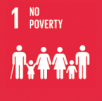
10.5 Mn People supported with Affordable Financial Services via Investments (96.7% Women)
5.6 MnMicrofinance clients served directly (98% Women)
77 Mn People provided with access to financial services (50% Women)
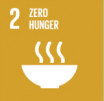
13Mn Farmers supported with livelihoods, products, and services via engagements and investments
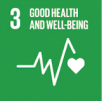
2.3Mn People provided with affordable healthcare via investments (56% Women)

3.4Mn+ Students provided with affordable, quality education via investments (50% Women)

7427 Women Led MSMEs supported directly with Finance and Capacity Building Services

15.5Mn People provided with sanitation facilities via Group companies and investments (50% Women)
6.92Mn People provided with potable drinking water via investments (50% Women)

1.1Mn People provided with solar cookstoves and solar lights via Group companies and investments (90% Women)
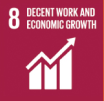
655K Jobs and livelihoods created at Group companies and via investments
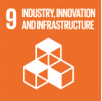
3039 Early-stage enterprises incubated and supported
56K MSME Provided with Financial Services, Products and Services
2.6 Mn MT CO2 Emissions Reduced

4.2Bn Disbursed in Microfinance, MSME Finance, and Equity Investments to enterprises and individuals in developing countries

7185 People Provided with Financial Services to Build Houses

198K MT Waste recycled via engagements and investments

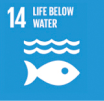
267 Artisanal fishermen provided with fair-trade market access

31 "Sankalp Conferences (Global + Africa) - world’s largest Convening on Impact Entrepreneurship"
We have been realizing this vision through each of the Aavishkaar Group businesses - Aavishkaar Capital, Arohan, Ashv, and Intellecap – that individually support various parts of the journeys of low and middle-income entrepreneurs. Together, we have been able to create a platform that leads to exponential impact across entire ecosystems. We strongly believe and promote ‘Impact’ in the DNA of all our group businesses. By leveraging capital, knowledge and networks, we provide a strong differentiated capability as an Impact platform, with each business rooted in strong fundamental and common principles of access, inclusion and sustainability.
All businesses make an Impact. But not all investments are Impact Investments
We believe that most businesses make an impact. However, it is difficult to make certain kinds of impact and commercial capital is shy to deal with such challenges that they fully don’t comprehend; therefore, impact investing has a pioneering role associated with it. We also believe that while all companies make impact but not all investments are impact investments. And we strive to understand the distinction between the two and this remains a challenge in our journey.
Our IMM Framework looks at impact in all its dimensions
Our interpretation of Impact is highly contextual and driven by our deep understanding of the local context. Our framework considers the obvious and direct impact that is visible and can be measured quantitatively. In addition, we look at the depth of impact that go beyond the obvious impact due to its ability to generate significant leverage on the sector or the market.
The Aavishkaar Group's first Impact Investment Fund was conceptualized right at the turn of the 21st century. The creation of the Fund was based on our understanding that businesses can drive significant impact in the lives of the economically excluded. Creating a supportive ecosystem and investing in entrepreneurs willing to combine profit with purpose, would impact lives positively. This is our core impact thesis.

Our initial hypothesis emphasised on specific demographics for impact, such as farmers and artisans who were economically active yet unable to participate in the progress. We gravitated towards the idea of creating companies rather than investing in established ones, thereby becoming the first investor in almost all our companies. We focused on sectors like Agriculture, Dairy, Healthcare, Education, Rural Distribution, Artisanal work and Microfinance.
By 2010, it became evident to us that the idea of creating impact through investment was more complex than we’d imagined. Our approach, which by now was globally recognised as ‘Impact Investing’, pushed us to be an interim capital provider. So, we started looking at scale as a critical metric to attract other investors.
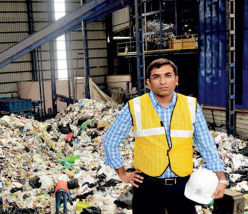

Our next phase of impact evolution was linked to our questioning of the attribution and ownership of impact. Is the impact owned by us or the entrepreneur? How do we make a distinction? Whose impact are we reporting? The decision to not interpret enterprise impact as our impact helped us to largely resolve the discussion about impact and its ownership. Here, we decided to look at ‘Our Impact’ from the perspective of the contribution by the fund investment team in identifying entrepreneurs, ideas, geographies, demographics and anything that was credit to the vision and hard work of the investment team.
This distinction has ever since been a critical and unique attribute of Aavishkaar’s Impact Reporting principle.
The evolution of India's demographic profile has seen a reduction in absolute poverty, and the emergence of a resource rich and highly aspirational middle class. Our impact lens has now evolved to take into account the ambitious investments that are looking at the demand of low and middle income segment population in domains like pre-school education, access to finance, better health and even safety nets like insurance, pensions etc.
Thus, after engaging in a robust sector wide debate at the India Impact Investor Council, we expanded the demographic definition in this phase of our impact to include 87% of India (Families earning more than 10 USD per day).
Microfinance clients served directly; 98% Women MFI clients
MSME clients served directly, 28% women-led MSMEs
Enterprises Disbursed Equity Capital directly; 29% Women-led Enterprises; 80% Enterprises received Institutional Capital for the First-time
Enterprises and MSMEs supported across sectors
CO2 emission reduced
People provided with essential services including healthcare, sanitation, and education
















 " sdg_title ="Partnership for the goals">
" sdg_title ="Partnership for the goals">
We have been realizing this vision through each of the Aavishkaar Group businesses - Aavishkaar Capital, Arohan, Ashv, and Intellecap – that individually support various parts of the journeys of low and middle-income entrepreneurs. Together, we have been able to create a platform that leads to exponential impact across entire ecosystems. We strongly believe and promote ‘Impact’ in the DNA of all our group businesses. By leveraging capital, knowledge and networks, we provide a strong differentiated capability as an Impact platform, with each business rooted in strong fundamental and common principles of access, inclusion and sustainability.
All businesses make an Impact. But not all investments are Impact Investments
We believe that most businesses make an impact. However, it is difficult to make certain kinds of impact and commercial capital is shy to deal with such challenges that they fully don’t comprehend; therefore, impact investing has a pioneering role associated with it. We also believe that while all companies make impact but not all investments are impact investments. And we strive to understand the distinction between the two and this remains a challenge in our journey.
Our IMM Framework looks at impact in all its dimensions
Our interpretation of Impact is highly contextual and driven by our deep understanding of the local context. Our framework considers the obvious and direct impact that is visible and can be measured quantitatively. In addition, we look at the depth of impact that go beyond the obvious impact due to its ability to generate significant leverage on the sector or the market.

Our initial hypothesis emphasised on specific demographics for impact, such as farmers and artisans who were economically active yet unable to participate in the progress. We gravitated towards the idea of creating companies rather than investing in established ones, thereby becoming the first investor in almost all our companies. We focused on sectors like Agriculture, Dairy, Healthcare, Education, Rural Distribution, Artisanal work and Microfinance.

By 2010, it became evident to us that the idea of creating impact through investment was more complex than we’d imagined. Our approach, which by now was globally recognised as ‘Impact Investing’, pushed us to be an interim capital provider. So, we started looking at scale as a critical metric to attract other investors.

Our next phase of impact evolution was linked to our questioning of the attribution and ownership of impact. Is the impact owned by us or the entrepreneur? How do we make a distinction? Whose impact are we reporting? The decision to not interpret enterprise impact as our impact helped us to largely resolve the discussion about impact and its ownership. Here, we decided to look at ‘Our Impact’ from the perspective of the contribution by the fund investment team in identifying entrepreneurs, ideas, geographies, demographics and anything that was credit to the vision and hard work of the investment team.
This distinction has ever since been a critical and unique attribute of Aavishkaar’s Impact Reporting principle.
The evolution of India's demographic profile has seen a reduction in absolute poverty, and the emergence of a resource rich and highly aspirational middle class. Our impact lens has now evolved to take into account the ambitious investments that are looking at the demand of low and middle income segment population in domains like pre-school education, access to finance, better health and even safety nets like insurance, pensions etc.
Thus, after engaging in a robust sector wide debate at the India Impact Investor Council, we expanded the demographic definition in this phase of our impact to include 87% of India (Families earning more than 10 USD per day).

